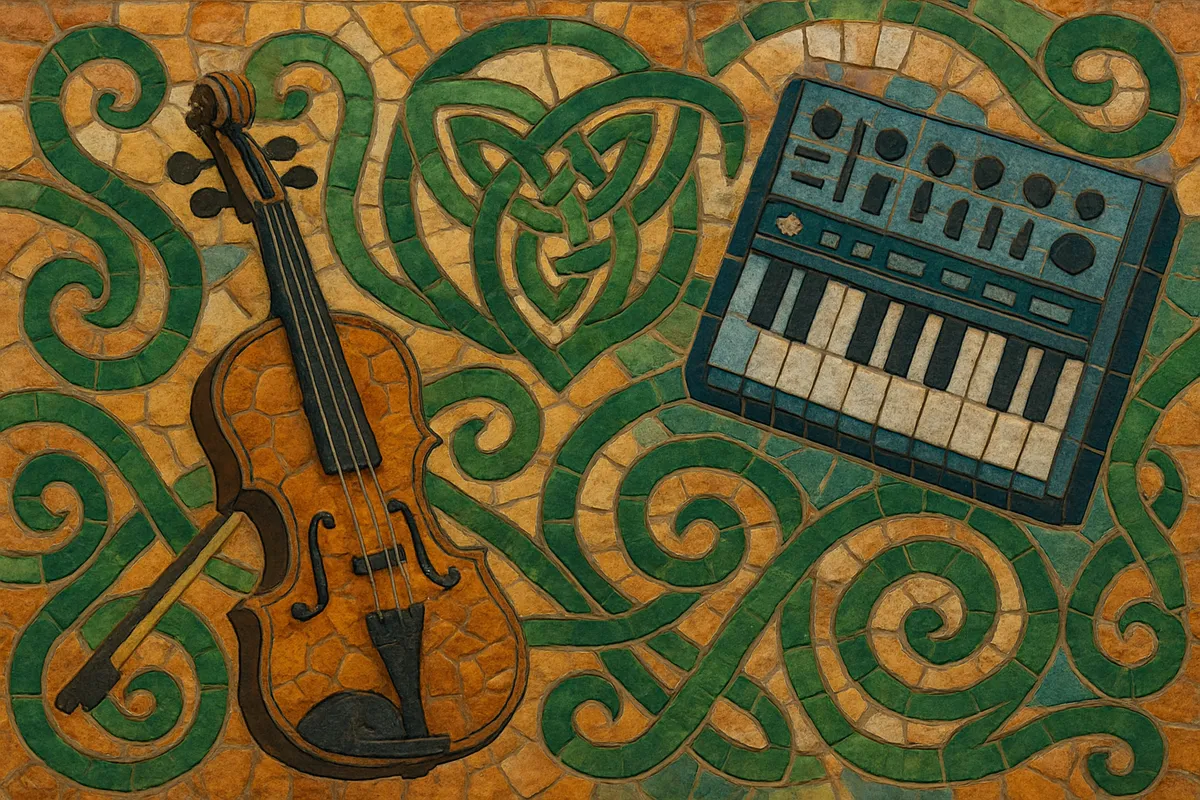
Celtic electronica is a fusion genre that blends the melodies, modes, and instruments of Celtic traditional music with contemporary electronic production.
Typical sounds include fiddles, uilleann pipes, whistles, Celtic harp, bouzouki, and bodhrán layered with synthesizers, samplers, drum machines, and atmospheric processing. Jigs, reels, and airs are reimagined over breakbeats, 4/4 house grooves, downtempo rhythms, and trance inflections, often retaining modal flavors like Dorian and Mixolydian.
The result is both rootsy and futuristic: a dance- and cinema-friendly soundscape where Gaelic and Scots traditions meet ambient textures, trip‑hop weight, and club-ready momentum.
Celtic electronica crystallized in the 1990s as artists in Scotland and Ireland began merging traditional tunes and instruments with electronic production. The movement was catalyzed by the world‑music and club cultures crossing paths at festivals and labels such as Peter Gabriel’s Real World Records. Shooglenifty coined the tongue‑in‑cheek term “acid croft” for their trad‑meets‑tech approach, while Afro Celt Sound System set a benchmark by weaving Celtic melodies with electronic grooves and pan‑African rhythms.
Parallel developments included the ambient/new‑age crossover of Irish and Celtic artists finding lush, synth‑assisted settings, and producers adapting reels and jigs to 4/4 and breakbeat frameworks for contemporary dance floors.
Through the late 1990s and 2000s, acts like Peatbog Faeries, Martyn Bennett, and Capercaillie expanded the sonic palette, incorporating drum and bass, trip hop, and trance textures. Gaelic and English vocals, live fiddles and pipes, and club-oriented arrangements drew Celtic music into venues and festivals traditionally aligned with electronic and world fusion scenes (e.g., WOMAD, Celtic Connections).
Remix culture further propelled the style: traditional airs and dance tunes were reinterpreted with sub‑heavy baselines, dub‑influenced delays, and widescreen ambient processing, making the music as suitable for chillout rooms as for main stages.
In the 2010s and beyond, Celtic electronica continued to intersect with folktronica and organic/“world” house, with producers sampling Celtic timbres or collaborating with tradition bearers. While remaining a niche, it persists as a vibrant, cross‑cultural space for innovation—soundtracking films, contemporary dance, and hybrid club nights—while keeping a clear line back to session music and ceilidh energy.
Recast trad dance forms into electronic frameworks:
•Reels (4/4 at 110–128 BPM) align well with house/techno grooves.
•Jigs (6/8, often 90–110 BPM) can be felt in two; layer a 6/8 top over a halftime or 4/4 kick for polyrhythmic lift.
•Slip jigs (9/8) invite broken‑beat or downtempo experimentation.
•Use tight, syncopated bodhrán or frame‑drum patterns to humanize quantized beats; sidechain or ghost‑note them with the kick for propulsion.

